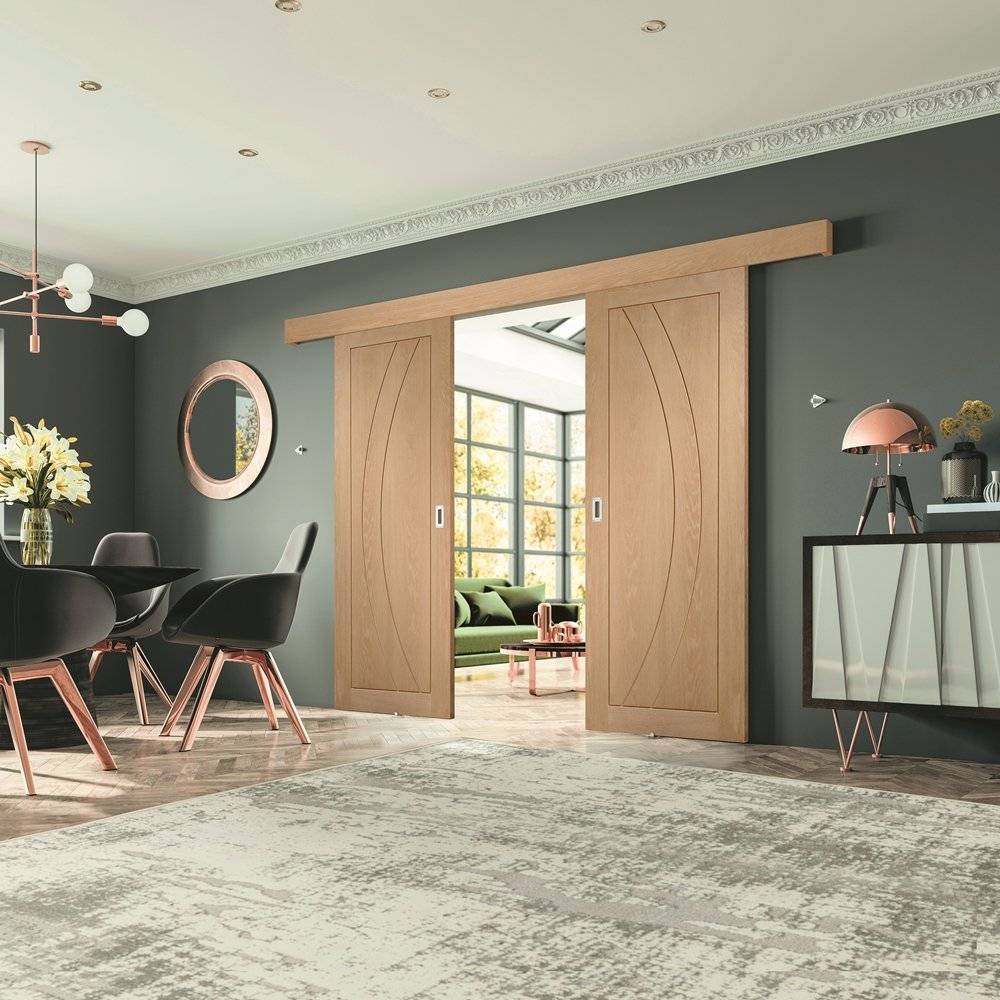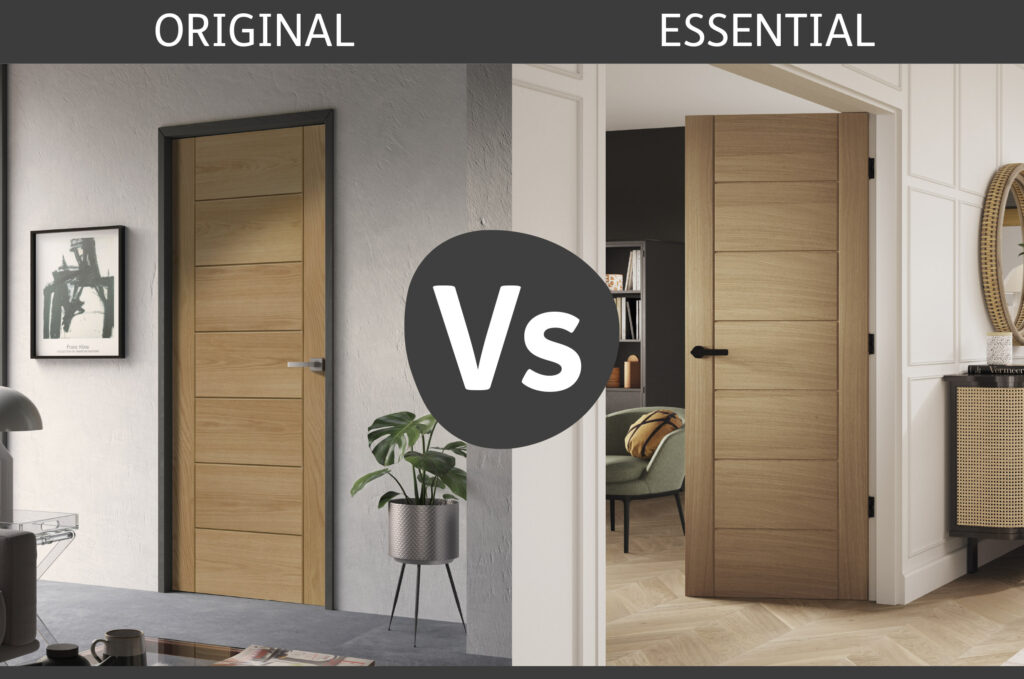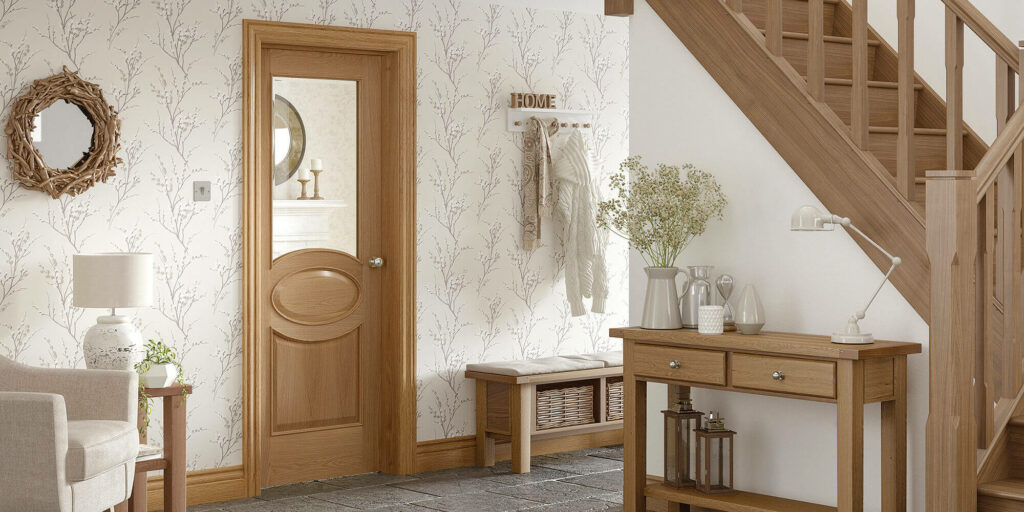Does your home need fire doors?

When renovating your property, it’s not always clear if you need fire doors or not when you come to replace internal doors or fit new ones. In some circumstances, home renovators may find fire doors are compulsory but this is not always the case. Read our guide for all the information you need.
Most of us have seen a fire door at some point in our lifetime though probably not noticed it.
If you have had the opportunity to handle a fire door you may have noted its obvious heaviness compared to a regular interior door. This is due to the dense fire-retardant core material. From a visual perspective, fire doors do not differ from standard doors and are essential to provide fire safety on a building. Many people don’t fully understand the actual functions of a fire door and when it is required.
What are fire doors?
A fire door is a door which has been especially constructed and fitted correctly to help slow down the rate of a fire. Typically, fire doors fitted in domestic premises are known as ‘fire door 30 minutes’ (FD30), which means they have been tested to resist smoke and flames for 30 minutes.
Fire doors form a part of the passive fire protection system, a structure that is in place in order to potentially contain fires when they break out, or slow down how quickly they spread.
A fire door is always required in buildings other than dwellings, such as offices, factories, etc. In these cases, access to protected corridors which are used as a means of escape must be protected from fire by the use of fire doors.
When renovating your property, it’s not always clear whether you need fire doors or not when you come to replace internal doors or fit new ones. In some circumstances, home renovators may find fire doors are compulsory, but this is not always the case.
Does my renovation project need fire doors?
If you have an architect for your project, they can usually advise you what the requirements are and deal with all the regulations for you. For smaller renovations, the following building regulations will apply:
- A two-storey house which has a door leading from an integral garage into the house requires a fire door.
- New build or renovated homes with three or more storeys including loft conversions must have fire doors to every habitable room off the stairwell.
What if I’m just replacing my doors?
If you’re getting new interior doors and do not currently have fire doors fitted, standard doors are fine. You might want to consider fire doors anyway as a safety measure, but it’s important to note that fire doors are thicker than standard doors and may not fit your existing door frames.
We always advise that you speak to an experienced joiner if you have any questions about fitting fire doors. Further information can also be found at BWF-CERTIFIRE.
Is fireproof paint a good alternative?
Unfortunately, simply using fireproof paint on your internal doors will not suffice. A door painted with fireproof pain is not recognised as a fire door and therefore does not comply with British Woodworking Foundation (BWF) standards to meet safety regulations.
Can I fit a fire door myself?
If you’re a DIY enthusiast, you might have the skills and knowledge to do this but we advise that you get a professional joiner to fit your door as correct fitting is essential for the door to do its job in the event of a fire.
Do fire doors prevent fire if left opened?
Unfortunately, laving your fire foor open defeats the purpose of having it as it will be just as effective as a standard door. Depending where your door is in your house, you might not keep it closed all the time but it’s essential to ensure it stays shut when you leave the house and when you go to bed.
XL Joinery has more than 25 years of experience helping to transform homes and is a leading supplier of interior doors and accessories. Many of our inspiring door designs are available as fire doors so you don’t need to worry about them looking out of place in your home. For more advice and to find out how we can help you, give us a call on 01924 350 500.



